ARTIST MONOGRAPHS
|
|
in stock $45.00 Free Shipping UPS GROUND IN THE CONTINENTAL U.S. |
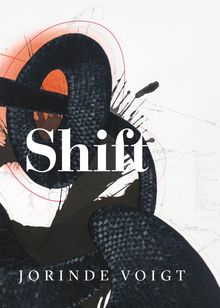 Jorinde Voigt: Shift
Jorinde Voigt: Shift
Published by Walther König, Köln.
Jorinde Voigt (born 1977) has developed a complex vocabulary of lines, diagrams, symbols and handwritten notes, which represent abstract phenomena such as space, time, the earth's rotation or velocity. This book features her new project, Song of the Earth, a monumental drawing cycle set out in eight compositions, inspired by Mahler's song cycle Das Lied von der Erde (1908–09), synthesizing visual art and music.
PUBLISHER
Walther König, Köln
BOOK FORMAT
Paperback, 10 x 13.5 in. / 544 pgs / 700 color.
PUBLISHING STATUS
Pub Date 2/19/2019
Active
DISTRIBUTION
D.A.P. Exclusive
Catalog: SPRING 2019 p. 194
PRODUCT DETAILS
ISBN 9783960981466 FLAT40
List Price: $85.00 CAD $115.00
AVAILABILITY
In stock
in stock $85.00 Free Shipping UPS GROUND IN THE CONTINENTAL U.S. |
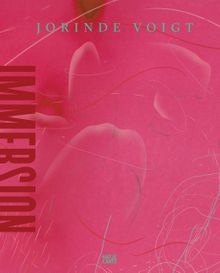 Jorinde Voigt: Immersion
Jorinde Voigt: Immersion
Published by Hatje Cantz.
New multi-format drawings in ink, pencil, pastels, copper and aluminum by German artist Jorinde Voigt (born 1977) aim to describe perception itself. Plates from the series—each featuring the torus, an archaic mathematical shape that Voigt conceives as a model for perception—are illustrated in this monograph.
PUBLISHER
Hatje Cantz
BOOK FORMAT
Hardcover, 10 x 12.5 in. / 264 pgs / 240 color.
PUBLISHING STATUS
Pub Date 11/26/2019
Active
DISTRIBUTION
D.A.P. Exclusive
Catalog: FALL 2019
PRODUCT DETAILS
ISBN 9783775745246 FLAT40
List Price: $75.00 CAD $108.00
AVAILABILITY
Out of stock
STATUS: Out of stock Temporarily out of stock pending additional inventory. |
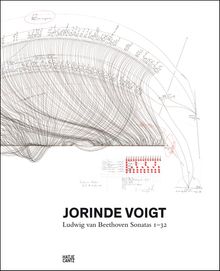 Jorinde Voigt: Ludwig van Beethoven Sonatas 1–32
Jorinde Voigt: Ludwig van Beethoven Sonatas 1–32
Published by Hatje Cantz.
Edited by David Nolan. Text by Franz W. Kaiser, Jorinde Voigt.
PUBLISHER
Hatje Cantz
BOOK FORMAT
Clth, 10.25 x 12.75 in. / 136 pgs / 64 color.
PUBLISHING STATUS
Pub Date 2/23/2016
Active
DISTRIBUTION
D.A.P. Exclusive
Catalog: SPRING 2016 p. 187
PRODUCT DETAILS
ISBN 9783775740425 FLAT40
List Price: $85.00 CAD $112.50
AVAILABILITY
Out of stock
STATUS: Out of stock Temporarily out of stock pending additional inventory. |
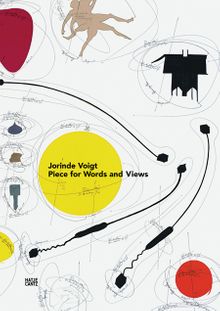 Jorinde Voigt: Pieces for Words and Views
Jorinde Voigt: Pieces for Words and Views
Published by Hatje Cantz.
Edited by David Nolan. Text by John Yau.
PUBLISHER
Hatje Cantz
BOOK FORMAT
Hardcover, 9.75 x 12.75 in. / 80 pgs / 57 color.
PUBLISHING STATUS
Pub Date 2/28/2013
Active
DISTRIBUTION
D.A.P. Exclusive
Catalog: SPRING 2013 p. 190
PRODUCT DETAILS
ISBN 9783775734738 TRADE
List Price: $60.00 CAD $79.00
AVAILABILITY
Out of stock
STATUS: Out of stock Temporarily out of stock pending additional inventory. |
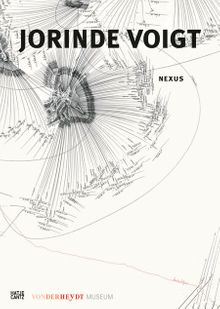 Jorinde Voigt: Nexus
Jorinde Voigt: Nexus
Published by Hatje Cantz.
PUBLISHER
Hatje Cantz
BOOK FORMAT
Paperback, 9.75 x 13.5 in. / 144 pgs / 200 color.
PUBLISHING STATUS
Pub Date 9/30/2011
Out of print
DISTRIBUTION
D.A.P. Exclusive
Catalog: FALL 2011 p. 145
PRODUCT DETAILS
ISBN 9783775728232 TRADE
List Price: $55.00 CAD $65.00
AVAILABILITY
Not available
STATUS: Out of print | 00/00/00 For assistance locating a copy, please see our list of recommended out of print specialists |
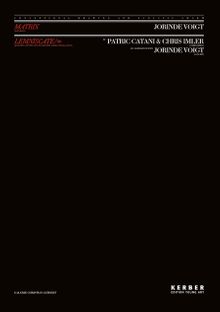 Jorinde Voigt: Matrix & Lemniscate
Jorinde Voigt: Matrix & Lemniscate
Published by Kerber.
Text by Andrew Cannon, Oliver Tepel.
PUBLISHER
Kerber
BOOK FORMAT
Paperback, 8.75 x 12.25 in. / 76 pgs / 6 color / 64 bw.
PUBLISHING STATUS
Pub Date 6/30/2010
Out of stock indefinitely
DISTRIBUTION
D.A.P. Exclusive
Catalog: SPRING 2010 p. 144
PRODUCT DETAILS
ISBN 9783866782853 TRADE
List Price: $35.00 CAD $47.50
AVAILABILITY
Not available
STATUS: Out of stock indefinitely. |

